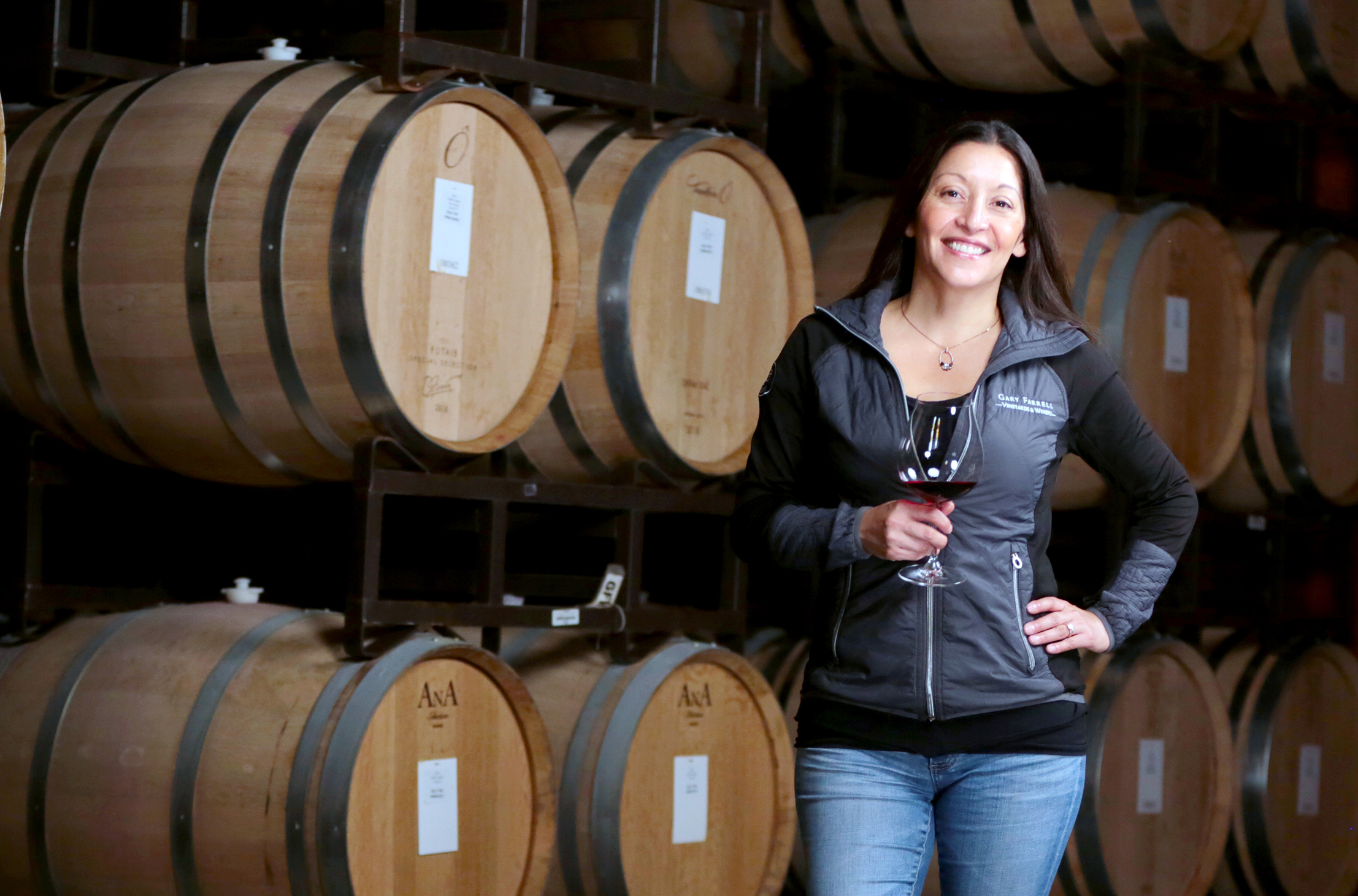For 10 days in February, Palm Springs locals opened the sleek doors of their Wexler, Lautner and Neutra homes to the public. Our recap of Modernism Week…
Text and photos by Christopher Lisotta
Welcome to Palm Springs
For a city with a population of less than 50,000 sun-soaked souls, Palm Springs massively outclasses much larger metropolises when it comes to art and design. The home to hundreds of signature Mid Century architectural gems and countless works of 20th century art, Palm Springs entices lovers of all things jet age with its annual Modernism Week. Just over a decade old, Modernism Week started with an art show and the local art museum’s lecture program, but has blossomed like a cactus flower into a 10-day-long extravaganza of panels, screenings, fashion shows, exhibits and pool parties. As a Palm Springs local, I embrace the crowds with a surge of civic pride as I get to enjoy the celebration of all things mod along with visitors from around the globe. My first stop was to Modernism Week headquarters, or CAMP (Community and Meeting Place), which was located in the soon-to-be renovated J. W. Robinsons Department Store building, a 1958 aluminum pavilion-style masterpiece. Besides hosting a bar and a pop up of the local breakfast place Cheeky’s, CAMP housed Modernism Week’s gift shop, which featured some must-have tchotchkes, including some rad architect devotional candles. My favorite items, however, were the decidedly Palm Springs tissue boxes, which were designed to look like local houses and commercial buildings. Form meets function, indeed.
Phoenix Rising
“We’re children of the Mid Century,” Charles Phoenix says with a mile-wide grin, “so we’re all spoiled rotten.” A cheeky twinkle in his eye, probably thanks to his luminescent two-piece suit, Phoenix has made a name for himself through his love-of-all-kitsch slide shows of post-WWII Americana. Phoenix started collecting other people’s vacation and holiday slides back in 1992, and found beehive hairdos, highway tourist traps and quirky small-town celebrations had been lovingly photographed and momentarily forgotten until he gave these slips of film a new life in the 21st century.
His first find is a perfect fit for Modernism Week—a woman leans on one of Detroit’s finest 1950’s automobiles, with a domed like building in the background that would do both Buckminster Fuller and George Jetson proud. Phoenix took the nearly SRO crowd at the Palm Springs Art Museum’s Annenberg Theater on a journey through his found slides plus a mix of his own lovingly taken photos. A trip to St. Louis includes a tour of a perfectly restored Constellation propeller aircraft, and the successful search for a decorative rocket that graced the old TWA building. In Tennessee Phoenix was tipped off to the existence of the last remaining “Merrymobile,” a local beloved peculiarity that may be the most unique ice cream stand/vehicular device in all the land. Seattle’s Space Needle, Disneyland’s tragically demolished House of the Future, and Frank Lloyd Wright’s spectacular Oklahoma skyscraper were all lovingly referenced by the always enthralled Phoenix, who seemed to channel his inner Paul Lynde when he would turn to the audience and coo, “IIIII love it. Don’t yooooooou??” We do, Charles! We do!
¡Viva Modernismo!
This year Modernism Week featured a whole series of lectures on Cuba, arguably one of the more timely locations for curious travelers and classic car aficionados, but also a new go-to destination for architecture lovers. Eduardo Luis Rodriguez, author of The Havana Guide: Modern Architecture 1925-1965, explained that after Cuba became a republic in 1902, the stage was set for a movement that would help define the new island country’s architectural identity. When a group of architecture students burned all copies of their institute’s Viñola Arquitectura, the appalled teaching staff realized they needed to do more than just return to the classic Spanish and colonial styles that dominated Cuban architectural thought. Visits by Richard Neutra and Walter Gropius helped inspire a new outlook, and allowed the next generation of builders to take what was being done elsewhere and “tropicalize” modern sensibilities. With an assist from the Brazilian Genius Oscar Niemeyer, this new generation incorporated more conducive shapes and colors into their designs, while paying heed to the harsh sun and frequent tropical storms that were a way of life in Cuba. The sleek skyscraper hotels built on the eve of the revolution were the perfect canvases for Cuban muralists and sculptors, even if the heyday of conspicuous overconsumption in the gorgeously designed casinos and nightclubs were about to come to a crashing end. Rodriguez argues that the early post revolution era was not kind to innovative architecture because competition for designs ground to a halt, but the beauty of decades of captivating design still shines bright so many years later.
Southern Exposure
James Schnepf says he’s not an architectural photographer, but his 2015 book, Palm Springs Modern Living, seems like evidence against that, until you look closer at some of his shots. While Schnepf is captivated by the modernity of Palm Springs’ most alluring homes, he thinks the bigger story are the people who live in these gorgeous time capsules. If anything, the people in these houses and in Schnepf’s photos show this Palm Springs architecture is not glassed off pieces of delicate art, but living embodiments of a very active desert lifestyle.
Schnepf, who prefers shooting at dawn and dusk to bring out the details of much of the architecture, captured images of some iconic Palm Springs residents, including architect Albert Frey’s longtime companion and sometimes collaborator Jean Ferrar, as well as one of the masters himself, William Krisel, who lords over one of his masterpieces in an Eames rocking chair. Schnepf embraces the natural look of his photos, noting he taps into the basics to get the right shows. “The best light source is the sun,” he reveals. “It just needs help sometimes.”
Passion for Architecture
While names like Alexander, Krisel, Williams will get any Mid Century Modernity fan’s heart pumping, saying “Harlan Georgesco” out loud at a Modernism Week party will probably induce blank stares. Who? Turns out Georgesco, born Haralamb Georgescu in Romania, is one of the more obscure but just as compelling architects to add to the 20th century canon. Born in 1907 to a military family, Georgescu quickly helped transform Bucharest in his twenties thanks to a complement of apartment buildings, factories and mixed-use buildings he designed before World War II. The aftermath of the war and the rise of the Communists meant the son of the imperial aristocracy and a noted intellectual didn’t have much of a future in eastern Europe, so off to the U.S. did Georgescu flee, which included the transformation of his name. After a brief stint in Nebraska, Georgesco decamped to L.A., where he started building homes, including a cube-inspired house in the hills for UCLA professor Pier Maria Passinetti. An engaging Italian and Comparative Literature professor with a weakness for coeds, Passinetti hosted so many rollicking parties in the late 50’s and early 60’s neighbors dubbed the place “ the Passion-etti” house. With its straight lines, open staircase, and soaring views of the overlooking canyons, Gerogesco created a real show stopper. However, his son Christopher noted besides a few buildings in Palm Springs (including the infamous Chi Chi Club, which featured topless revues) and more single-family homes in Los Angeles, his biggest endeavor never left the blueprint stage. An early prognosticator of Los Angeles’ epic struggle over sprawl and congestion, Georgesco saw the need to design large buildings that would encompass live, work shopping and entertainment spaces. His Skylots proposal saw the creation of open multistory towers that would hug the soon-to-be-created 405 freeway on the western edge of the city. Too ambitious for a low-slung city, Gerogesco’s designs never found an audience, but many of his creations still serve Southern California today.
The Man Himself
Hugh Kaptur cuts an amazing figure. Dapper in his bright tie and matching tie, plus an impressive head of shocking white hair done up high, Kaptur is one of the few living architects left who helped make Palm Springs the iconic place it is. In a conversation with Modernism Week Board of Directors member Gary Johns, Kaptur said his most amusing honor was being asked to autograph one of his homes by its overzealous gentlemen owners. He chose to sign a wall inside a hall closet. “I’m a closet architect, I guess,” he noted. The designer of the city’s municipal golf course building, capture was sensitive to its proximity to the city’s airport. Knowing the building was located by the final approach for overhead aircraft, he chose a roof design that hid much of the air conditioning equipment that would otherwise blight a view from above. The building still thrives, even if the city “put a moustache on it,” as Kaptur calls the free standing awning that was added without his consultation.
Kaptur’s work seems to be almost sculpted out of clay, which is no accident. “I always try to bring a little local flair to localize a project,” he explained. “Not L.A. architecture but Palm Springs architecture.” That included elements that seem more in line with Native American design and adobe accents, a far cry from the steel and glass favored by so many others. In a world where commercial development has wiped out too many mid century buildings to make way for McMansions or Tuscan monstrosities, One of Kaptur’s most well-known commercial complexes in Palm Springs was recently spared after a regime change at city hall. Tahquiz Plaza, which Kaptur built to his own specifications because it served as his local offices, was slated for demolition by a local developer until the 2015 election saw the ascendance of a preservationist majority on the city council. The developer, who sensed the change in the air, made a quick about face and dropped the development plans to embrace a restoration of the property, with Kaptur advising.
Kaptur is aligned to the Palm Springs way of life in other ways too. His late wife is in one of the most famous pictures ever snapped within city limits, Slim Aarons’ “Poolside Gossip.” Mrs. Kaptur is the woman sashaying her way poolside, as the Kauffman House reigns from behind. Kaptur may be best known for building the hillside home of actor William Holden, who Kaptur remembers as one of his best clients ever (“he was so nice!”). Holden had a specific vision for what he wanted. “He told me, ‘Hugh, when I sit in my pool, I want the water to disappear into the sky,’” the architect remembered. Kaptur came up with the idea of the overspill feature, and the view was preserved. Kaptur thinks this design means he may have designed the first infinity pool in existence. Holden had homes on multiple continents, so Kaptur was curious why his world-famous client chose Palm Springs for what was to become his main residence. “First I want to get all my good shit in one spot,” Holden told Kaptur. “Second, the air here is like velvet.”
The Last Wexler
Donald Wexler helped define Palm Springs. His zigzag roofs, walls of glass and straight lines are all across the city, and the active architect’s legacy seemed like it would go on forever, because he lived so long and was so prolific. But his death at 89 in late 2015 meant his storied career had finally ended. But months after his death, One of his final designs has been realized. Using blueprints drawn up about 15 years ago, Wexler’s first single family home in decades has been completed, and was one of the highlights of Modernism Week’s house tours. Wexler was closely involved in the placement of the house on the property where it sits to get the maximum view of the nearby mountains, which only adds to the home’s overall impact. Called The Last Wexler tour, seeing the light-filled home was a fitting in to Modernism Week. See you in Palm Springs in 2017!
Last modified: January 17, 2018











